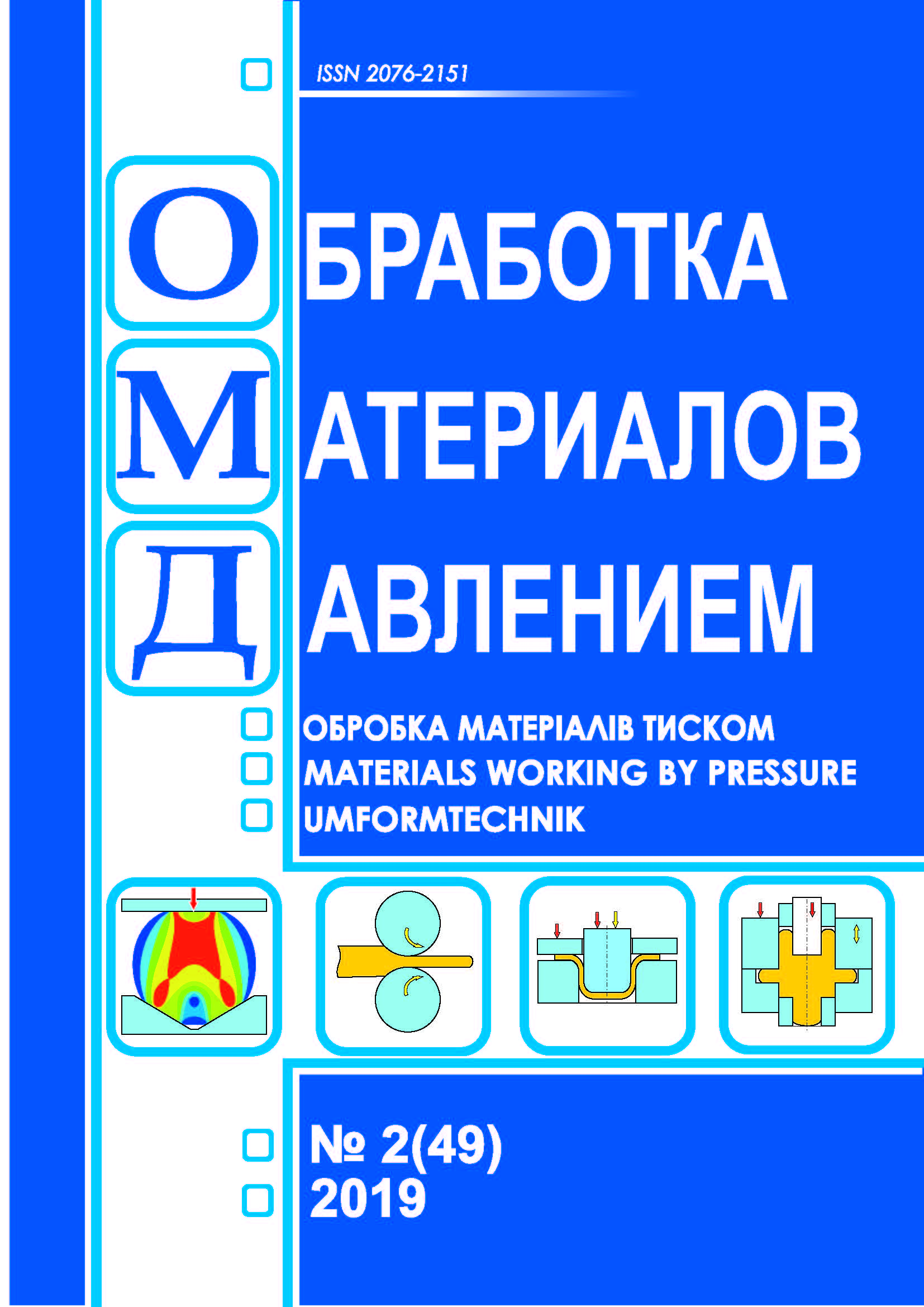Апроксимація контуру бокової поверхні заготовок при осадженні пласкими бойками
DOI:
https://doi.org/10.37142/2076-2151/2019-2(49)35Ключові слова:
осадка; контур; діжкоутворення; супереліпс; апроксимація; формула.Анотація
Аніщенко О. С., Кухар В. В., Присяжний А. Г. Апроксимація контуру бокової поверхні заготовок при осадженні пласкими бойками // Обробка матеріалів тиском. – 2019. – № 2 (49). - С. 35-40.
Запропоновано апроксимувати контур бокової поверхні заготовки, що осаджена між пласкими бійниками, супереліпсом Габріеля Ляме. Показано, що за величинами коефіцієнтів апроксимації супереліпсом можна визначити форму контуру. Зокрема, якщо коефіцієнт n дорівнює двом, то контур бокової поверхні є часткою кола, при n трохи більше або менше двох – маємо еліптичний або параболічний контури заготовки. Запропоновані схеми, які пояснюють вибір оптимальних систем координат апроксимуючої функції з формулами, за якими слід використовувати безрозмірні системи координат. Наведена нова формула для визначення коефіцієнтів апроксимації в супереліпсі. Формула заснована на рівності об’ємів заготовки до і після деформації. Об’єм деформованої заготовки визначено методом інтегрування супереліпсу Ляме, який попередньо розклали в ряд Фур'є і застосували перші два члени цього ряду. Формула не вимагає проведення великого числа вимірювань точок контуру бокової поверхні і включає в себе висоту і діаметр вихідної заготовки, а також висоту, діаметри торця і бочки деформованої заготовки. Вміщені відомості про апроксимації супереліпсом бокових контурів свинцевих деформованих заготовок. Для першої серії заготовок, які мають однакові вихідні висоту і діаметр (20 мм), осаджені зі ступенем деформації, що дорівнює 0,4, із застосуванням різних мастил і в режимі сухого тертя, був визначений за методикою Губкіна коефіцієнт тертя між заготовкою і пласкими бійниками, який знаходився у межах μ = 0,29-0,41. Коефіцієнт n супереліпса для контурів бокових поверхонь цих заготовок знаходився у межах від 1,55 (осадка без мастила, μ = 0,41) до 1,88 (осадка з мастилом «Укрінол-7, μ = 0,29). Друга серія заготовок діаметром 30 і висотою 60 мм була продеформована без мастила між заготовками і плитами зі ступенями деформації, що дорівнювали 0,1-0.5 (крок зміни ступеня деформації – 0,1). Виявилося, що зі зростанням ступеня деформації коефіцієнт n супереліпса зменшується з 2,15 до 1,47, тобто контур бокової поверхні заготовок все більш стає параболо подібним.
Посилання
Tonneau (formules). Available at: https://fr.wikipedia.org/wiki/Tonneau_(formules).
Torrentea G. Numerical and experimental studies of compression-tested copper: proposal for a new friction correction. Materials Research. 2018; 21(4). DOI: http://dx.doi.org/10.1590/1980-5373-MR-2017-0905
Aluko O., Adeyemi M.B. Warm Compression Tests of Aluminum Alloy. Journal of Materials Engineering and Performance. 1998, 7(4), pp. 474–478.
Sadowski A.J., Michael Rotter J. . Exploration of novel geometric imperfection forms in buckling failures of thin-walled metal silos under eccentric discharge. International Journal of Solids and Structures. 2013, 50(5), 781–794. DOI: http://doi:10.1016/j.ijsolstr.2012.11.017
Anishchenko A., Kukhar V., Artiukh V., Arkhipova O. Application of G. Lame’s and J. Gielis’ formulas for description of shells superplastic forming. MATEC Web of Conferences, 06007 2018. DOI: https://doi.org/10.1051/matecconf /201823906007
Overfelt P.L. Superspheroid geometries for radome analysis. Naval air warfare center weapons division chi-na lake, CA 93555-6001, Sept. 1994, 40 p. Available at: https://apps.dtic.mil/dtic/tr/fulltext/u2/a285405.pdf

